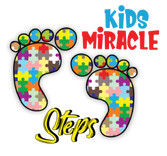Ever thought how normal moments can turn into chances for at-home language development? It’s about making your child’s talk skills better with fun. You can change simple things into something amazing. This magic happens when you use the right speech drills at home for kids.
Talking secrets to Easter eggs or making up stories with Play Doh is key. We learn from Vanderbilt University the importance of engaging speech exercises led by parents. These exercises boost children’s language skills. But what’s the best way to make these drills both effective and fun?
Here’s the secret: Make speech practice an enjoyable part of life. We’ll show you heartwarming ways to include home speech therapy in your day. With creative tools and support, you can make enjoyable speech practices grow at home.
Understanding the Importance of Speech Therapy at Home
Speech therapy isn’t just an appointment. It’s a journey that happens at home too. Bringing home speech therapy into daily life can make a big difference in a child’s ability to communicate. It strengthens what they learn outside and lets them use new skills where they’re most comfortable.
Parents play a key role in this process, offering lots of benefits. They can make learning directly meet their child’s needs. This makes practice not just regular but fun and related to daily activities. So, therapy becomes an integral part of growing up, not just another task.
Home is where kids feel safe and supported. Doing speech therapy there boosts their confidence and willingness to try. Parents can give feedback right away, helping their child get better at communicating step by step.
- Enhanced comfort and ease for the child, leading to more effective learning sessions.
- Gives caregivers the flexibility to choose the time and pace of drills, ensuring that therapy occurs when the child is most receptive.
- Allows for immediate application of learned speech patterns in day-to-day communication.
Home speech therapy doesn’t just work on speech and language. It lets parents and caregivers actively help their child communicate better. Knowing how important their role is, caregivers can make every moment with their child a chance to improve their language skills.
Incorporating Speech Drills at Home Into Everyday Activities
We know it’s tough to help children with special needs develop their speech. Adding speech drills to your daily activities can make learning fun and improve language skills smoothly. Doing speech practices throughout the day can really help your child feel more confident and talk better.
Here are some ways to practice speech in everyday tasks:
- Meal Preparation: Get your child to help make meals to learn new words and steps. Talk through each step as you make a sandwich, and let your child repeat or tell you what comes next.
- Shopping: Use grocery shopping to teach new words and choices. You can ask, “Do we pick apples or oranges?” to help with making decisions and talking.
- Driving: Car rides are great for chatting and telling stories. Talk about where you’re going, what you’ll see, and who you might meet, letting your child make up sentences and share their thoughts.
- Bedtime Routines: Wrap up the day with a bedtime story, making it interactive by asking your child to guess what happens next or imitate animal sounds.
Adding speech practice to these activities doesn’t take extra time. It just makes your regular schedule more beneficial for improving speech naturally.
What’s important is not to aim for perfect, but for better. Each small talk, decision-making session, and fun interaction is a big step towards improving speaking skills. Your participation in these daily moments is key to their speech growth.
Transforming Games Into Educational Speech Exercises
Kids love playing, and that play can be very helpful, especially with educational speech games. By using popular kids’ games, parents and therapists can make playtime into useful therapy. This way, kids have fun and learn speech skills without even knowing it.

Think about simple stuff like Play Doh or blocks. These aren’t just for making shapes. They’re chances for speech activities. For example, parents can have their child describe a block’s color and shape, or follow instructions. This improves their speaking and understanding skills.
Classic board games like “Guess Who?” are also great. This game makes kids ask and answer questions, bettering their speaking and thinking skills. They learn how to describe people and think critically.
Looking for structured activities? There are many online guides. Like this helpful guide on speech therapy exercises for kids. It has exercises that can be done at home. These resources are detailed and help kids improve with your support.
At District Speech and Language Therapy, we’ve seen turning therapy into games really helps. It makes learning fun for kids. Making therapy enjoyable ensures it’s not only good for them but also a lot of fun for everyone.
Creating a Stimulating Learning Environment for Speech Practice
For parents eager to boost their child’s talking skills, setting up an engaging learning space is key. Creating a distraction-free speech practice area is a smart move. This spot lets kids concentrate solely on improving their speech, away from daily disturbances.
A language-rich environment uses a lot, like books and art, to boost a child’s talking and listening skills. Parents can add activities that fit right into daily routines. Reading together, showing pictures, and talking about what’s around them can make a big difference in how a child learns to speak.
| Element | Importance | Example |
|---|---|---|
| Visual Aids | Support understanding and retention | Charts, flashcards |
| Books | Build vocabulary and comprehension | Varied genres and themes |
| Descriptive Communication | Enhances active listening and speech replication | Parallel talk and narration of daily activities |
| Dedicated Spaces | Encourages focused learning and reduces distraction | Corner of a room with minimal distractions |
Designing Speech Drills at Home That Kids Love
Making speech therapy fun at home is a creative challenge. We mix learning with games to catch kids’ interest. By adding speech games to everyday activities, we make learning fun.
We use themes in speech drills to keep kids interested. For example, during Easter, we can use plastic eggs for a language game. Kids can fill these eggs with words or pictures. This turns a simple exercise into an exciting adventure.
| Activity | Description | Learning Objective |
|---|---|---|
| Egg Hunt Speech Game | Using plastic Easter eggs to hide speech exercise prompts | Teach prepositions and expand vocabulary |
| Singing Sessions | Incorporating favorite songs to practice phonetics and rhythm | Improve phonetic accuracy and fluency |
| Role Play | Creating scenarios where children use new words in dialogue | Boost conversational skills and contextual usage |
We keep speech therapy exciting by using props kids love. This makes sure they have a good time and stay focused. When kids are having fun, they learn better. This improves their ability to communicate.
Interactive Online Tools and Apps for Speech Development
In today’s world, speech therapy apps and digital language tools are changing how we help kids with their communication skills. These online options make learning to speak better fun and easy to get to.
For example, Splingo’s Language Universe and Articulation Station show how online speech resources mix learning with enjoyment. These apps use bright pictures and fun activities to draw in kids. While they play, they’re also improving their ability to talk. This approach is a great addition to regular speech therapy. It lets parents bring language learning into home life.

- They offer a variety of activities that cover different speech and language areas. This meets the different ways kids learn and what they need.
- Interactive features urge kids to dive into the learning process. This makes it easier for them to remember what they practice.
- The instant feedback from these apps shows both kids and parents what they need to work on. This encourages a hands-on approach to improving speech.
By using speech therapy apps wisely, parents and guardians can greatly improve a child’s language abilities. They offer a rich learning experience that adds to the usual ways of teaching speech.
Success Stories: Real-Life Improvements from Home-Based Speech Drills
Across the United States, families see big changes with home-based speech therapy. These success stories show the strength of personalized drills at home. This setting helps a lot.
Many praise how fitting therapy into home life boosts speech. Kids struggling with sounds begin to speak more clearly. This makes them more confident and eager to keep going. It’s amazing to see the role of consistency and the home environment in overcoming speech hurdles.
One story tells of a kid who didn’t improve until therapy focused on his home life. Tailoring therapy to a child’s needs can truly make a difference. This approach highlights the importance of personalized care.
Another tale shares how blending therapy with playtime not only boosted a child’s speech but also their family’s closeness. Such stories give key lessons for both parents and experts aiming for better results.
If you want to learn about these therapy wins, read more on how it works best at home. These journeys show how hard yet rewarding improving speech can be, as these stories share.
Tips for Keeping Kids Engaged and Motivated During Speech Drills
Successful home-based speech therapy needs to be fun and motivating. We will look into strategies and ideas that make young learners excited to participate.
Making the sessions fun is key. You could turn exercises into games or contests. This way, kids can win points or prizes for using certain words or sounds right. By focusing on fun, practice feels like play, not work.
- Use colorful visuals or exciting storylines that involve speech tasks
- Include interactive elements like singing or dancing
Motivational strategies are also crucial. Rewards or progress charts can make a big difference. They show the child’s progress clearly, helping them understand and aim for their goals.
| Strategy | Description | Benefits |
|---|---|---|
| Parallel Talk | Adults narrate what the child is doing, effectively modeling language use. | Increases language exposure and mirrors correct usage. |
| Choice Giving | Offering children choices during activities to encourage active participation and decision-making in using language. | Empowers children and promotes language use in decision contexts. |
| Positive Reinforcement | Praising the child for successful use of language, regardless of the attempt’s perfection. | Builds confidence and reinforces the learning process positively. |
Getting the whole family involved is also important. It makes speech practice a normal part of the child’s day. Use mealtimes, car rides, and walks as chances to practice speech.
Keep sessions short and lively. Children’s attention spans are short. By having brief but frequent sessions, you keep their interest and avoid overwhelming them. Break the exercises into small, fun parts. This will help their language skills grow in a happy, supportive environment.
At the heart of successful speech therapy at home is making it fun and rewarding. Use these tips, and see your child’s communication thrive with enthusiasm and confidence.
Addressing Common Challenges in Conducting Speech Drills at Home
When we try to do speech drills at home, we often run into problems. These can make it hard to help children effectively. We struggle to keep them interested and deal with their frustration. Here are ways to beat these problems and make sure you and your kiddo enjoy working together.
Making a nurturing space at home is key. This means being patient and tuning in to what your child needs. Every kid is different and may need various methods or tools. Here’s what you can do to support therapy at home:
- Make speech drills part of everyday activities. This turns them into fun moments rather than tasks.
- Pick games and activities your child loves for speech practice. This makes learning feel more like play.
- Keep sessions short to prevent tiredness and keep their interest alive.
It’s also critical to talk with your child’s speech therapist. They can give advice that fits your child’s specific needs, making practice at home more effective. This helps make therapy time less stressful for everyone. With these adaptable strategies focused on your child, you can tackle speech therapy challenges at home better.
Conclusion
We’ve talked about many ways to encourage speaking skills in your home’s comfort. Turning speech practice into a fun part of your child’s day can really happen. We know teaching language at home might feel lonely. Yet, using enjoyable, game-like activities can make your child more excited about practicing speech. By fitting these activities into daily life, your child can improve communication in a loving and relaxed space.
In this article, we’ve given you tips and insights for effective speech practice. We’ve highlighted stories of success that show how at-home practice methods can change things for the better. And if you ever need extra help or advice, places like Kids Miracle Steps are there to support you and help your child’s speech and language grow.
To end our chat, I want to reinforce our promise to you. We truly believe in supporting each child’s growth and helping families with the right information and tools for ongoing progress. Your effort to improve your child’s speech and language skills builds understanding and strong family ties. Cherish these times, celebrate every achievement, and be proud that each step forward influences a lifetime of better communication. We’re here to help and encourage you as you move forward with this important home-based learning journey.






